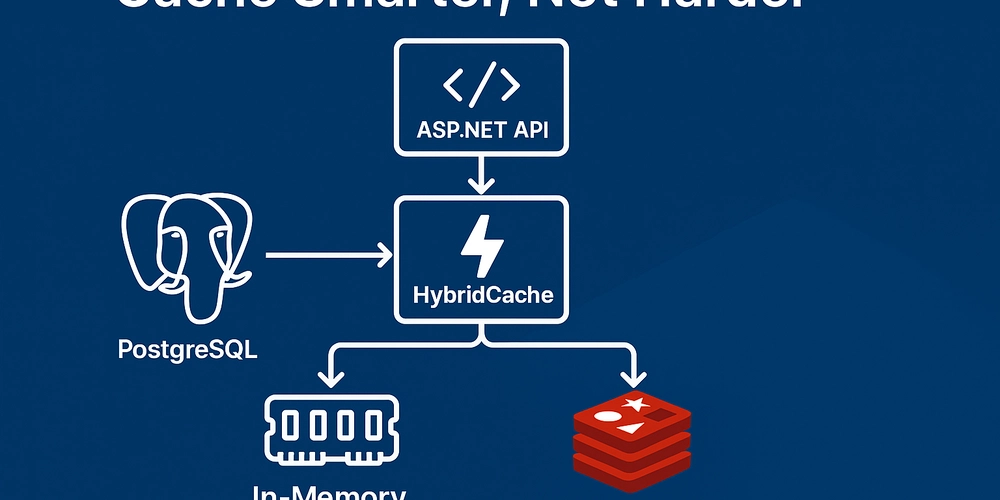Are you Junior… or Jedi Master? Why your first dev job feels like chasing a myth
breaking down the brutal truth about entry-level roles in tech and how to fight back with strategy, community Introduction the death of the “easy start” There was a time cue nostalgic montage music when landing your first dev job was hard, but not “Elden Ring without armor” hard. You’d learn some HTML, clone a few to-do lists, maybe survive a bootcamp, and apply to a handful of “entry-level” jobs that actually meant entry level. Then everything broke. Today, you’re expected to know React, TypeScript, Next.js, and possibly negotiate peace in the Middle East… just to qualify for an internship. Job listings for “junior frontend developer” come with 3–5 years of experience and a unicorn blood sacrifice. Bootcamps promised jobs in 90 days. But now? Reddit and Twitter are full of devs 300 applications deep, still unemployed. What happened? This article isn’t here to sell you another hustle fantasy. It’s a battle map. We’ll explore how the tech ecosystem shifted, why junior devs got squeezed out, and most importantly how to survive and grow anyway. With real-world examples, dev memes, and tactical advice, we’ll decode how to break into an industry that seems like it doesn’t want to let you in. By the end, you won’t just know what’s broken. You’ll know how to start fixing it for yourself. The ecosystem shift: junior devs caught in the storm Remember when tech was “desperate for talent”? Yeah, that era is now buried under a pile of AI-generated résumés and post-layoff hiring freezes. The junior dev job crisis didn’t happen overnight. It was the result of multiple tectonic shifts hitting at once like a software update that bricks your entire OS. 1. AI tools changed the equation Companies that once relied on junior devs to push simple features or clean up UI bugs now have GitHub Copilot, ChatGPT, and Claude in their toolbelt. Tasks that were once delegated to entry-level engineers can now be handled by a senior with AI assist. Example: a friend at a fintech startup told me they recently cut their intern program because “Copilot’s cheaper and doesn’t need onboarding.” Brutal? Yes. But it’s becoming common. TL;DR: It’s not just about replacing junior work AI lets seniors scale, making juniors “less essential.” 2. The post-pandemic budget axe Let’s talk economics. When interest rates went up and VC money dried up in 2022–2023, startups and tech giants alike stopped hiring like it was Black Friday. And guess who gets the axe first during layoffs? The lowest paid, least experienced people. Junior developers. Twitter (now X), Meta, Shopify, and even Google trimmed huge percentages of early-career hires. Some companies scrapped junior-level openings altogether and prioritized “cost-efficient scaling,” which is corporate-speak for “fewer humans, more AI.” 3. Companies want impact fast Today’s hiring mantra is: “if you’re not delivering from week one, we can’t afford you.” Many startups are running leaner than ever, and the bar to get hired looks less like a hurdle and more like a pole vault. And it’s not just startups. Even traditional enterprises now expect applicants to already know their stack, workflows, and project management systems. Training you? Ain’t nobody got time for that. Real job post I saw: “We’re looking for a junior full-stack developer with 4+ years of experience in Go, AWS, and Terraform. Must be self-sufficient.” 4. The mentorship vacuum Even when junior devs do get hired, they often get ghosted… by their own managers. Senior engineers are stretched thin. Middle management is gone. Mentorship programs? Budget-slain. That means juniors get tossed into the codebase like noobs in a MOBA match: no map, no help, and flaming teammates in the Slack channel. Summary: AI boosted senior dev productivity but killed off a lot of beginner-level tasks. Economic pressures made companies ultra-lean and risk-averse. Expectations from hires grew higher while mentorship support collapsed. So if you’re wondering why you’re applying to 80 jobs a week with no callbacks it’s not you, it’s the ecosystem. You’re not junior, you’re job-ready (except not really) Let’s get real for a second: You did the bootcamp. You built the React weather app. You even wrote a Medium post about JavaScript array methods that got five claps (and one pity comment from your instructor). By all accounts, you’re “job-ready.” But job-ready doesn’t mean job-getting. And that’s the dark joke no one tells you when you start learning to code. Because while you may be technically “ready” to contribute, the tech industry often expects you to be pre-battle-tested, battle-scarred, and able to slay dragons on day one. The job post paradox You apply to a job titled: “Junior Backend Engineer.” You scroll down. “Must have 3+ years experience with Node.js, GraphQL, MongoDB, AWS, Docker, and Kubernetes. Bonus if you’ve scaled systems to 1M+ users. Must thrive in high-pressure environments. You’re thinking: “Is this junior… or Jedi Master?” This isn’t an isolated

breaking down the brutal truth about entry-level roles in tech and how to fight back with strategy, community
Introduction the death of the “easy start”
There was a time cue nostalgic montage music when landing your first dev job was hard, but not “Elden Ring without armor” hard. You’d learn some HTML, clone a few to-do lists, maybe survive a bootcamp, and apply to a handful of “entry-level” jobs that actually meant entry level.
Then everything broke.
Today, you’re expected to know React, TypeScript, Next.js, and possibly negotiate peace in the Middle East… just to qualify for an internship. Job listings for “junior frontend developer” come with 3–5 years of experience and a unicorn blood sacrifice. Bootcamps promised jobs in 90 days. But now? Reddit and Twitter are full of devs 300 applications deep, still unemployed.
What happened?
This article isn’t here to sell you another hustle fantasy. It’s a battle map. We’ll explore how the tech ecosystem shifted, why junior devs got squeezed out, and most importantly how to survive and grow anyway. With real-world examples, dev memes, and tactical advice, we’ll decode how to break into an industry that seems like it doesn’t want to let you in.
By the end, you won’t just know what’s broken. You’ll know how to start fixing it for yourself.
The ecosystem shift: junior devs caught in the storm
Remember when tech was “desperate for talent”? Yeah, that era is now buried under a pile of AI-generated résumés and post-layoff hiring freezes. The junior dev job crisis didn’t happen overnight. It was the result of multiple tectonic shifts hitting at once like a software update that bricks your entire OS.
1. AI tools changed the equation
Companies that once relied on junior devs to push simple features or clean up UI bugs now have GitHub Copilot, ChatGPT, and Claude in their toolbelt. Tasks that were once delegated to entry-level engineers can now be handled by a senior with AI assist.
Example: a friend at a fintech startup told me they recently cut their intern program because “Copilot’s cheaper and doesn’t need onboarding.” Brutal? Yes. But it’s becoming common.
TL;DR: It’s not just about replacing junior work AI lets seniors scale, making juniors “less essential.”
2. The post-pandemic budget axe
Let’s talk economics. When interest rates went up and VC money dried up in 2022–2023, startups and tech giants alike stopped hiring like it was Black Friday. And guess who gets the axe first during layoffs? The lowest paid, least experienced people. Junior developers.
Twitter (now X), Meta, Shopify, and even Google trimmed huge percentages of early-career hires. Some companies scrapped junior-level openings altogether and prioritized “cost-efficient scaling,” which is corporate-speak for “fewer humans, more AI.”
3. Companies want impact fast
Today’s hiring mantra is: “if you’re not delivering from week one, we can’t afford you.” Many startups are running leaner than ever, and the bar to get hired looks less like a hurdle and more like a pole vault.
And it’s not just startups. Even traditional enterprises now expect applicants to already know their stack, workflows, and project management systems. Training you? Ain’t nobody got time for that.
Real job post I saw: “We’re looking for a junior full-stack developer with 4+ years of experience in Go, AWS, and Terraform. Must be self-sufficient.”
4. The mentorship vacuum
Even when junior devs do get hired, they often get ghosted… by their own managers.
Senior engineers are stretched thin. Middle management is gone. Mentorship programs? Budget-slain. That means juniors get tossed into the codebase like noobs in a MOBA match: no map, no help, and flaming teammates in the Slack channel.
Summary:
- AI boosted senior dev productivity but killed off a lot of beginner-level tasks.
- Economic pressures made companies ultra-lean and risk-averse.
- Expectations from hires grew higher while mentorship support collapsed.
So if you’re wondering why you’re applying to 80 jobs a week with no callbacks it’s not you, it’s the ecosystem.
You’re not junior, you’re job-ready (except not really)
Let’s get real for a second: You did the bootcamp. You built the React weather app. You even wrote a Medium post about JavaScript array methods that got five claps (and one pity comment from your instructor). By all accounts, you’re “job-ready.”
But job-ready doesn’t mean job-getting.
And that’s the dark joke no one tells you when you start learning to code. Because while you may be technically “ready” to contribute, the tech industry often expects you to be pre-battle-tested, battle-scarred, and able to slay dragons on day one.
The job post paradox
You apply to a job titled: “Junior Backend Engineer.” You scroll down.
“Must have 3+ years experience with Node.js, GraphQL, MongoDB, AWS, Docker, and Kubernetes. Bonus if you’ve scaled systems to 1M+ users. Must thrive in high-pressure environments.
You’re thinking: “Is this junior… or Jedi Master?”
This isn’t an isolated case. In fact, we sampled 10 recent job posts across LinkedIn and AngelList labeled “entry-level” or “junior” 7 of them required 2–4 years of experience. Some even required prior production experience. (Don’t ask how that math adds up. It doesn’t.)
The path to nowhere: CS degrees vs bootcamps vs self-taught
Let’s break this down:
- CS grads often finish school with strong theory, but little hands-on experience.
- Bootcamp grads have project experience, but not enough depth.
- Self-taught devs are wildcards great when focused, but often undervalued.
And guess what? None of these paths guarantee a job anymore. Because when every résumé on the table has a GitHub link and a portfolio site with dark mode, it’s no longer just about the what — it’s about the who, where, and who knows you.
The broken tutorial to job pipeline
This is where most new devs get stuck: the Tutorial Hell → Portfolio Project → Job Application cycle. You’re told, “Build more projects!” So you do. But no one’s looking at your code. Not recruiters. Not hiring managers. Sometimes, not even the bots parsing your résumé.
You could have the cleanest, DRYest, test-covered React app on the planet but if it’s not solving a problem or showing initiative in the open, it’s invisible.
Real talk:
Being “job-ready” is a myth unless you:
- Have something live, ideally with users or community involvement.
- Know someone at the company (referrals still reign supreme).
- Can speak confidently about systems, tradeoffs, and product goals not just syntax.
But here’s the twist:
You can get there. Just not by doing what the job boards tell you.
You’ll need to play the game differently.
The rise of the 10x intern and the vanishing mid-tier
If tech were an RPG, the class system would be broken.
Once upon a time, you had:





































































































































































![[The AI Show Episode 145]: OpenAI Releases o3 and o4-mini, AI Is Causing “Quiet Layoffs,” Executive Order on Youth AI Education & GPT-4o’s Controversial Update](https://www.marketingaiinstitute.com/hubfs/ep%20145%20cover.png)




























































































































![[DEALS] Microsoft 365: 1-Year Subscription (Family/Up to 6 Users) (23% off) & Other Deals Up To 98% Off – Offers End Soon!](https://www.javacodegeeks.com/wp-content/uploads/2012/12/jcg-logo.jpg)




![From Art School Drop-out to Microsoft Engineer with Shashi Lo [Podcast #170]](https://cdn.hashnode.com/res/hashnode/image/upload/v1746203291209/439bf16b-c820-4fe8-b69e-94d80533b2df.png?#)








































































































(1).jpg?#)































_Inge_Johnsson-Alamy.jpg?width=1280&auto=webp&quality=80&disable=upscale#)












































































































![Apple to Split iPhone Launches Across Fall and Spring in Major Shakeup [Report]](https://www.iclarified.com/images/news/97211/97211/97211-640.jpg)
![Apple to Move Camera to Top Left, Hide Face ID Under Display in iPhone 18 Pro Redesign [Report]](https://www.iclarified.com/images/news/97212/97212/97212-640.jpg)
![Apple Developing Battery Case for iPhone 17 Air Amid Battery Life Concerns [Report]](https://www.iclarified.com/images/news/97208/97208/97208-640.jpg)
![AirPods 4 On Sale for $99 [Lowest Price Ever]](https://www.iclarified.com/images/news/97206/97206/97206-640.jpg)

































![[Updated] Samsung’s 65-inch 4K Smart TV Just Crashed to $299 — That’s Cheaper Than an iPad](https://www.androidheadlines.com/wp-content/uploads/2025/05/samsung-du7200.jpg)


































































